6 Possible Produce-Loving Pests at the Grocery Store
6 Possible Produce-Loving Pests at the Grocery Store
One of the most enjoyable parts of grocery shopping is the time spent in the produce section. You get to pick out exactly which fruits and vegetables you want, and there are often containers of fresh fruit packaged in store to make things a little easier. But while it is nice to select your own produce in the same store that you can get just about anything food-related, it can be a problem if the fresh foods are not properly cared for beforehand. Chain grocery stores have specific monitoring and sanitation standards they must adhere to, as well as the FDA Food Code. This fortunately means that the piles of nationally-grown produce also have to be free of pests to an extent, and the store must be kept up. But if the proper cleaning and trash control methods are not done, there are some pests that would jump at the chance to invade this produce before it goes home with the customers.
Why Produce?
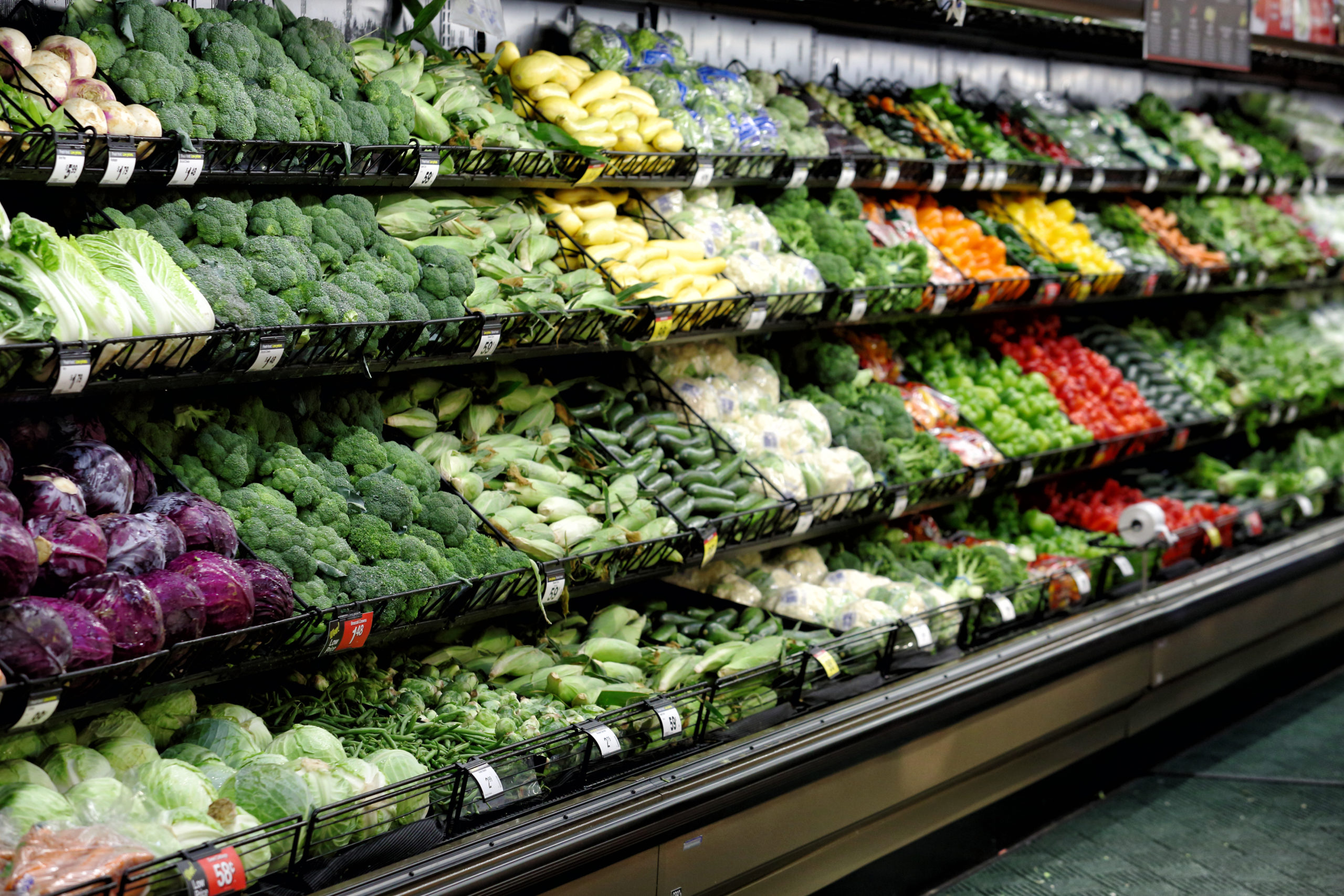
Out of the multitude of food options at a grocery store, it may seem strange that certain pests would gravitate toward produce. After all, aren’t there better hiding places elsewhere in the store? There are several reasons why produce is actually the primary pest target. For one, there is far less packaging in between the pest and the food. Some items may be wrapped in plastic or in a thin container, but even these can be gnawed through by persistent pests. Also, the odors in the produce section are enough to entice any pest to enter. Think of all of the smells from the fruits, vegetables, fungi, and gourds here. Many pests have a keen sense of smell that tells them where the best food sources are, which means they can detect their desired foods wherever they go. Some of them specifically enjoy overripe or underripe fruits and veggies, which we’ll get to later. But the produce section is definitely a world of smells for pests to discover, which is why sanitation is crucial.
In addition to the smells and lack of thick packaging, the produce section has the most moisture in the store. With the misters constantly going off and the produce retaining moisture, there is no shortage of water for pests. The pests that also lay their eggs in fruits and vegetables have everything they need: food, water, and shelter. If there is a trash can in this section, that is another attractor for a certain section of pests. Long story short, there are all kinds of reasons for pests to invade the produce section if there are no sanitation procedures done to prevent this. But what kinds of pests are most likely to invade, given the chance? Let’s find out!
Flies
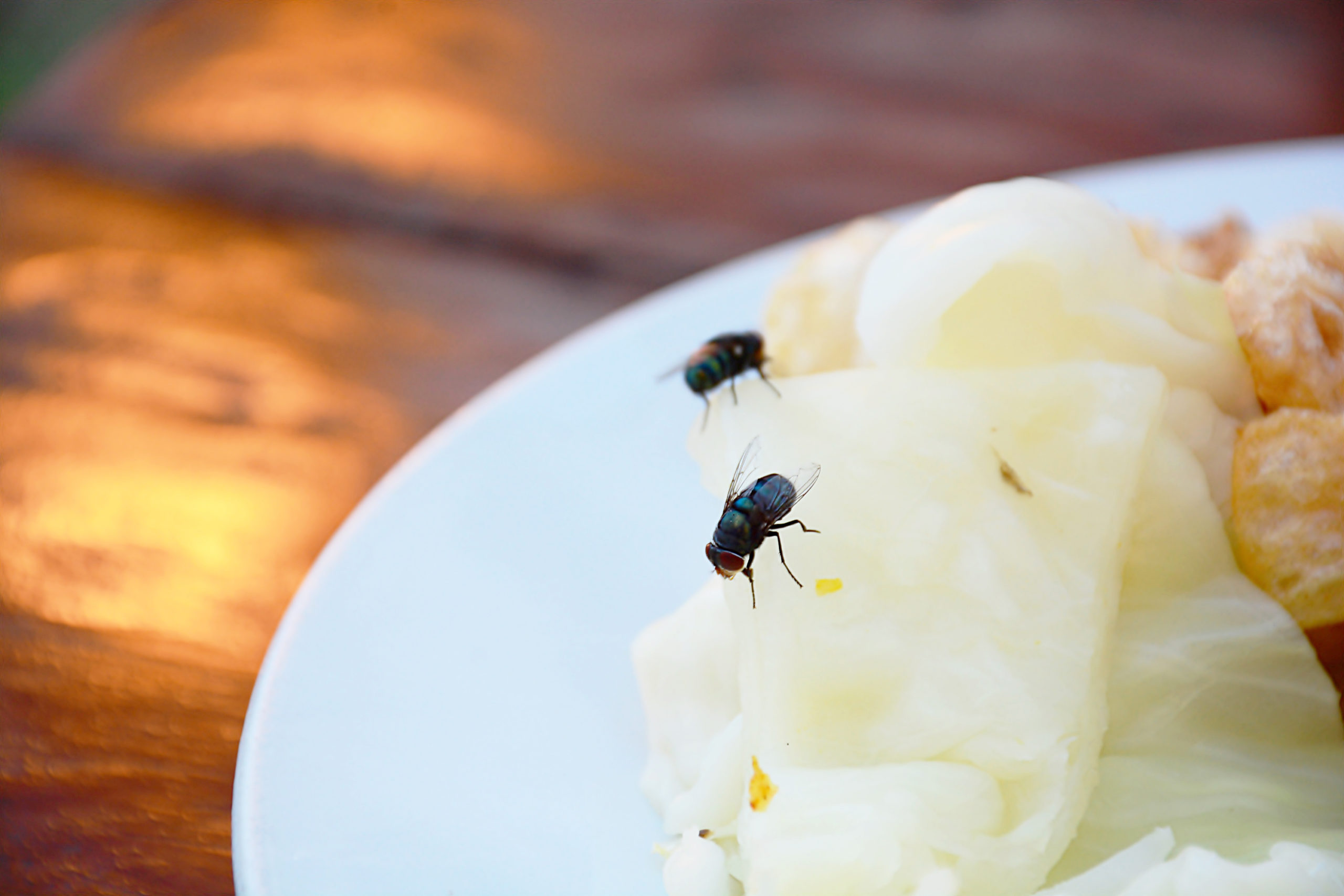
Considering they are one of the most common food-loving pests, it makes sense that flies would be found in the produce section. Flies are similar to rodents in that they will eat just about anything they can find, which starts with them having to taste the food with the taste receptors on their feet first. This is why we see flies walk all over our food and rub their legs together like they have an evil plan; they are tasting and cleaning off their taste receptors to ensure they get a pure taste experience. Flies cannot chew their food, so they spit digestive enzymes on the food to essentially turn it into a smoothie they can drink.
Flies are especially attracted to foods that give off any kind of odor, which means that fruits and vegetables are one of the main targets. If the produce is overripe at all, this is even more of a draw for the pests. Since common flies do not pose a threat through biting or stinging, how could they cause problems for us through infesting? Simple: through pathogens! Flies can carry over 100 harmful pathogens or viruses at a time, and they transmit them through their feet. Flies that walk all over garbage and waste before hiking over produce transfer all of those gross bacterial pathogens to the fresh food. Some of the most common illnesses that come out of a fly infestation include salmonella, E. coli, and cholera. People experience food poisoning-like symptoms after a fly invasion, so it’s important to keep those buzzing pests away from any and all produce.
Fruit Flies
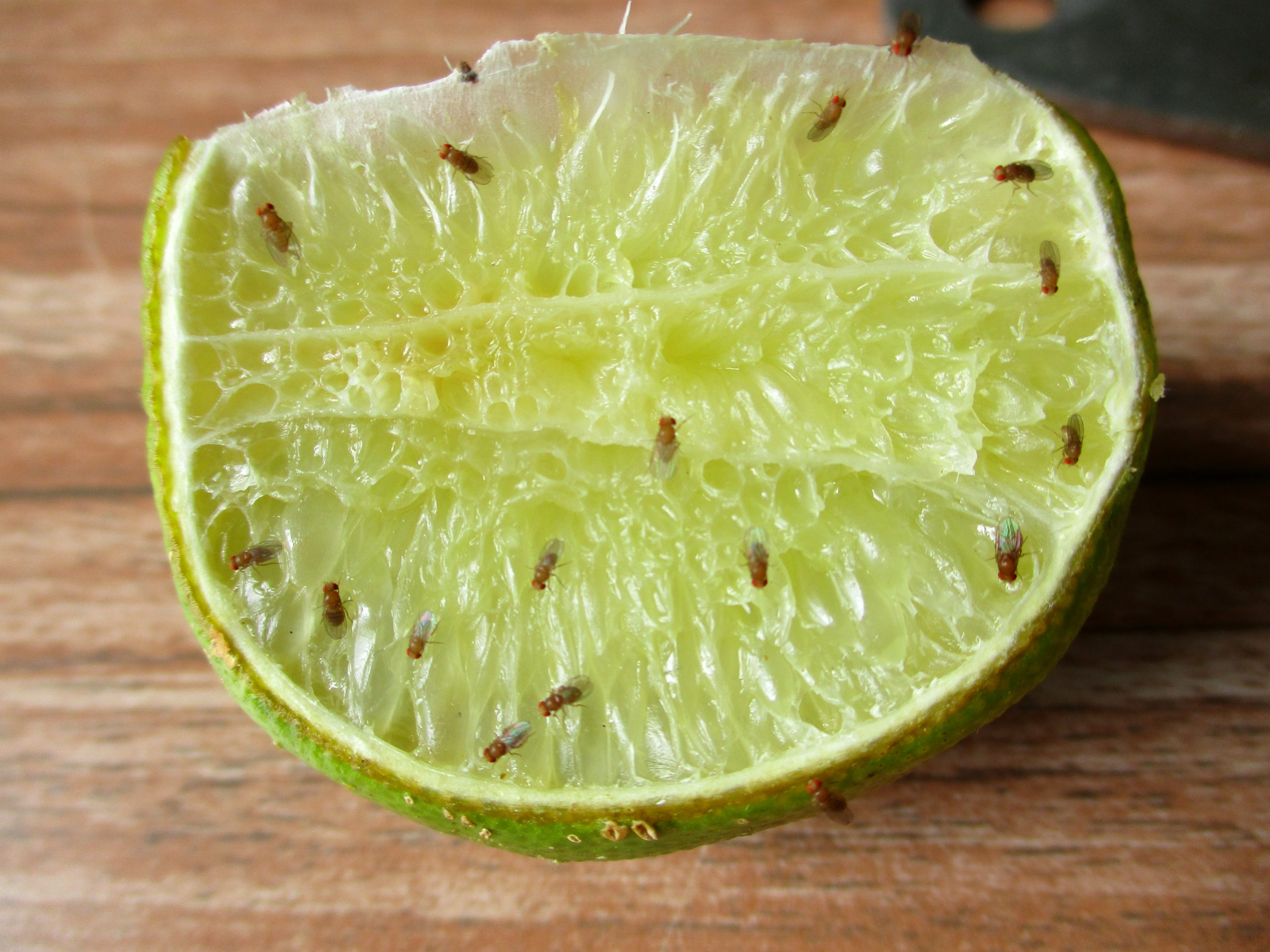
Of course fruit flies would be amidst the fruits and vegetables. Their name is no misnomer! Fruit flies are attracted to overripe and smelly fruits even more so than houseflies. These flies like anything that is fermented, whether it is a liquid or a solid. Their favorites include overripe fruit, vegetables, honeydew from aphids, drains, and even leftover alcohol. Soft foods that give off a strong smell are very appealing to these pests, so it’s common to see them in a trash can that has rotten fruit tossed in.
Fruit flies not only eat the overripe foods, they also lay their eggs in them. This is in line with the tendency of insects to do the same and lay eggs near the primary food source, so that the hatched larvae have immediate nutrients. Since fruit flies can lay hundreds of eggs a day during their short lives, an infestation can happen before you know it. Grocery stores are adamant about constantly checking the quality of the produce for this reason. This is also why it is important to throw out any rotten or overripe fruits and vegetables at home as soon as you can, before the fruit flies sniff them out and decide that these would make the best new home for their growing family.
Ants

This is the other food-loving pest that would always be near our food if they had the choice. Ants live to find food sources for their massive colonies, and any crumb or food particle they can find is satisfactory enough. They especially favor anything sugary or full of protein, and sweet fruits are right up their alley. But ants will take any kind of produce they can since they have less packaging and give off stronger smells the longer they are on the shelves. If there is any kind of crack or hole in the building, ants will make their way inside and find their way to the produce, leaving behind pheromones for the rest of their colony along the way.
Ants are also risky more for the invisible diseases they carry and less for any kind of biting they may do. Ants crawl places besides under store shelves and along the produce section. They also walk on decaying organic items and waste to find food, which means that those pathogens will spread to the normal food they walk on next. E. Coli and salmonella are also commonly linked to ants, and food poisoning-esque symptoms can also be linked to them. Spills and open food are the two main attractors of ants, which is partly why grocery stores keep their floors and shelves so clean!
Rodents
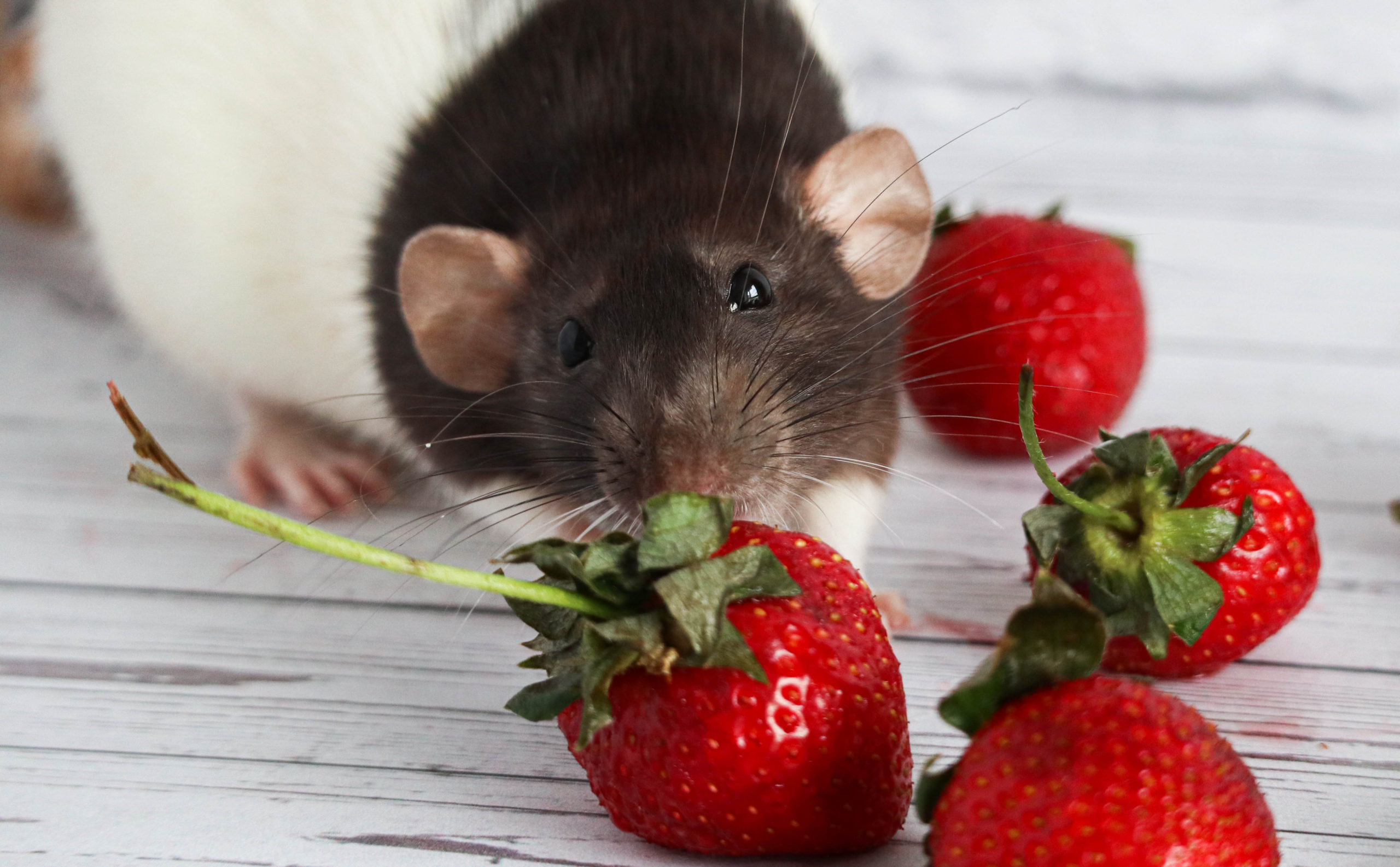
Contrasted with the small insects we’ve been discussing, it may be jarring to think about rodents running amok in the produce section. But in extreme cases where sanitation is not kept up, rodents could potentially be found in the produce. They are opportunistic omnivores, which means they will eat just about anything they can find. And since they are expert foragers who mainly work at night, they have plenty to choose from in a grocery store. They will even eat non-food items if they have access, especially anything with cellulose like cardboard and paper. Fruits and veggies would definitely be a treat for rats and mice who are used to finding their sustenance in a dumpster.
Speaking of, this is exactly why having rodents anywhere near food is dangerous. They spend the majority of their time hiding amidst the trash and rotten food in dumpsters and the like. The bacteria and harmful pathogens are then transferred from the gross trash to the rodent’s feet and body, which can then be left on the fresh food that it walks on later. And if they leave droppings behind on the produce, that’s even worse. No pest is a good pest to have in the produce section, but rats and mice are possibly the worst ones. Trust us, none of them will show off the culinary skills of Remy from Ratatouille when they get their paws on some ingredients.
Cabbage Loopers
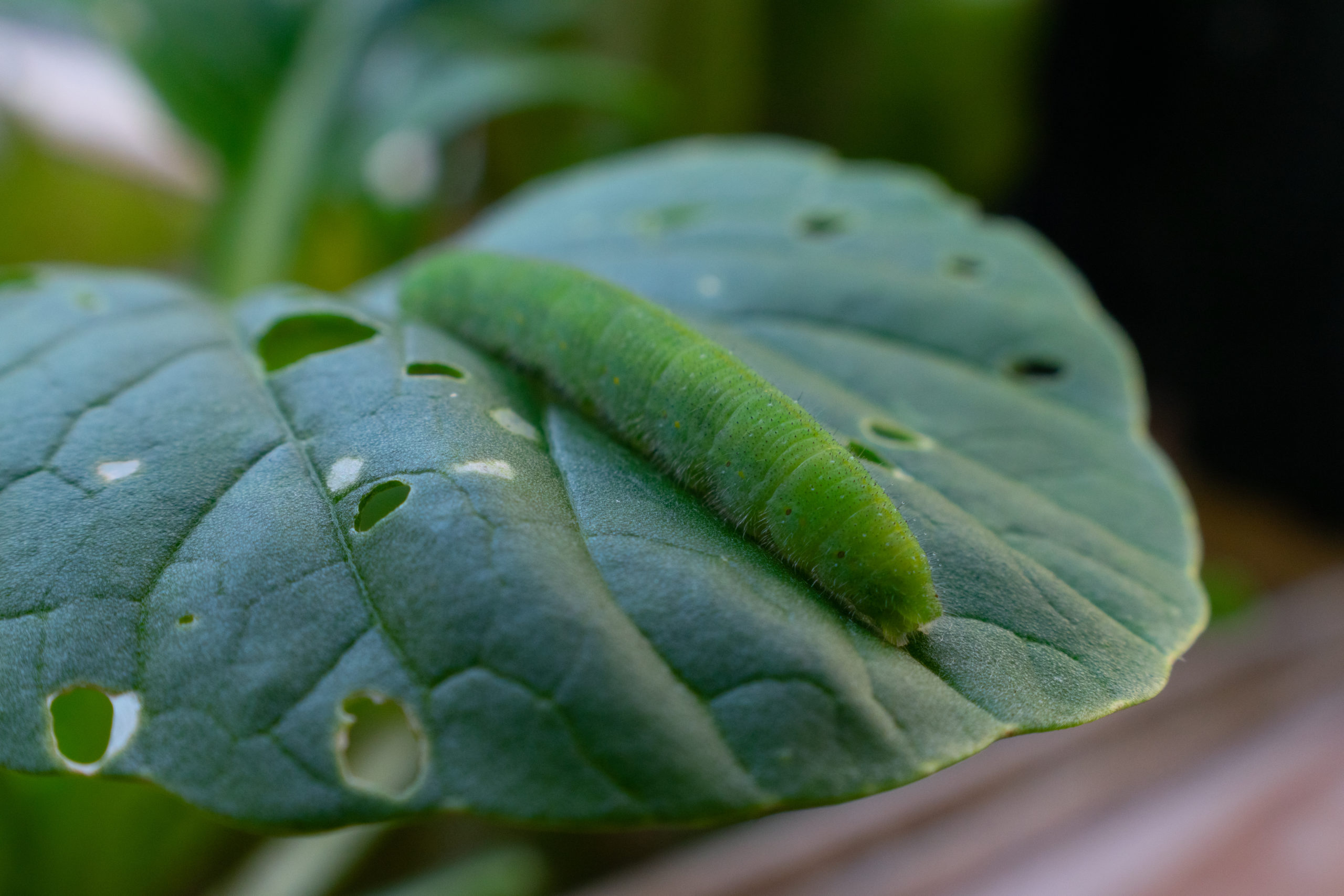
Cabbage loopers are not just loyal to cabbage, which means they are a larger problem than we’d like them to be. These caterpillars can cause real damage to certain crops, mainly during their growing season. Cabbage loopers are green with white lines, and they eventually grow into gray-brown moths. They lay their eggs under the leaves of crops for maximum protection, and the hatched larvae start chewing holes in the leaves soon. Fully-grown cabbage loopers like to stay near the center of the fruit or vegetable to constantly feed and be more protected.
Cabbage loopers can prevent the formation of food crops by constantly munching on their leaves and vital juices. Their favorites include cabbage (big surprise), broccoli, and cauliflower. It is not entirely common for them to be found in the produce at the grocery store since they are likely picked off by that point. But we still recommend inspecting each piece of produce you select, just to make sure there aren’t any hungry green caterpillars inside.
Common Asparagus Beetles
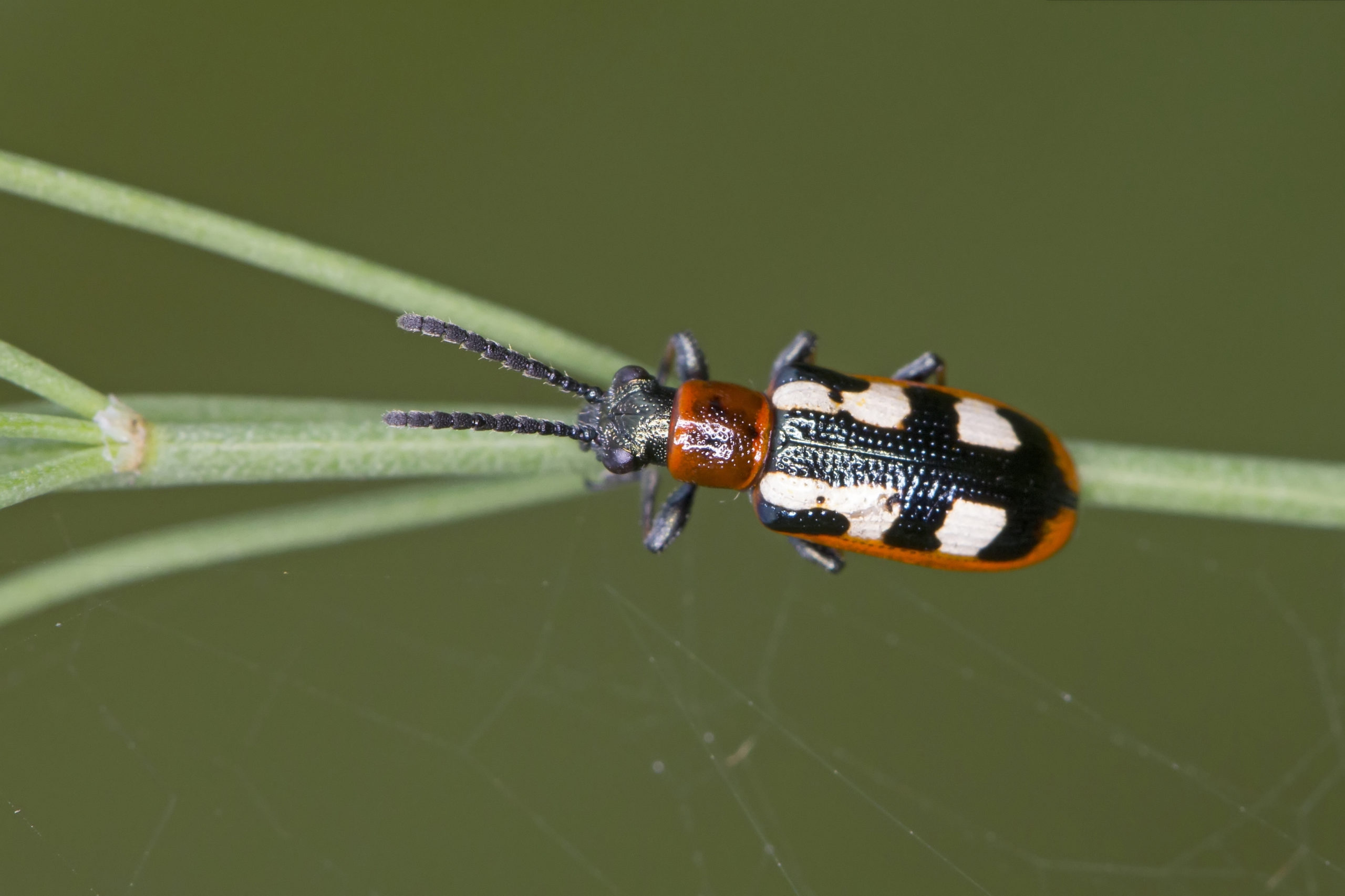
This one is usually more of a problem during the growing stages when the asparagus is still in the ground, but it is worth mentioning. There are two main kinds of asparagus beetle, with the spotted asparagus beetles being the other type. The common asparagus beetle is much more of a threat, as it deals more damage to asparagus in general. It feeds from its larval stage through adulthood, and can ruin asparagus crops just by repeatedly feeding on it. They lay their eggs on the lower part of the asparagus stalk so that they can immediately start feeding when they hatch. The eggs look like tiny grains of rice sticking out from the side of an asparagus stalk.
Asparagus that has been feasted upon by these pests is more brown than green and bends over in a fishhook shape. Asparagus will start to droop eventually if it is overripe and starting to decay, but a depleted asparagus is prematurely wilting. If these veggies are eaten by the common asparagus beetles enough, they can actually lose their nutritional value! With the nutrients being extracted by the beetles from their initial growth spurt, the asparagus will be weak and unable to retain its nutrients even after it is harvested. As long as the asparagus in your store looks like the typical bright green stalks, you shouldn’t have anything to worry about in this area.
Don’t Bring Home Pests with the Produce!

Odds are that if you shop at a chain grocery store of any kind, you will not have to worry about finding an army of ants in your apricots. If major grocery stores do not uphold their cleanliness and monitoring of sanitation, they will quickly go downhill in terms of their reputation. There is even the risk of lawsuits and compensation if the problem is bad enough. But just because the store does not have a major pest issue does not mean that every fruit or vegetable you bring home has never been touched by a type of pest. Just be sure to do a quick scan of each item before you put it in the cart, and wash everything well at home.
Whether or not there are pests with the produce, dealing with a pest invasion is never a good time. Our team of knowledgeable pest control technicians are dedicated to solving every pest problem, no matter what season it is. Fall is a great time to start services since it is good preparation for the upcoming cold weather, when every pest is searching for a warm shelter. Contact us for a free quote and to learn how our eco-friendly treatments can help you enjoy creating meals out of your groceries without the possibility of pests becoming a secret ingredient.
Citations
Hahn, J. (2020). Asparagus beetles in home gardens. University of Minnesota Extension. Available at https://extension.umn.edu/yard-and-garden-insects/asparagus-beetles (Accessed on October 13, 2022).
Schuh, M., Hahn, J., & Wold-Burkness, S. (2022). Caterpillars on cole crops. University of Minnesota Extension. Available at https://extension.umn.edu/yard-and-garden-insects/caterpillars-cole-crops#cabbage-loopers-3201711 (Accessed on October 13, 2022).
Wood, H. (2019, October 8). Top 5 pests impacting supermarkets and grocery stores. Rentokil. Available at https://www.rentokil.com/blog/top-5-pests-supermarkets (Accessed on October 13, 2022).

